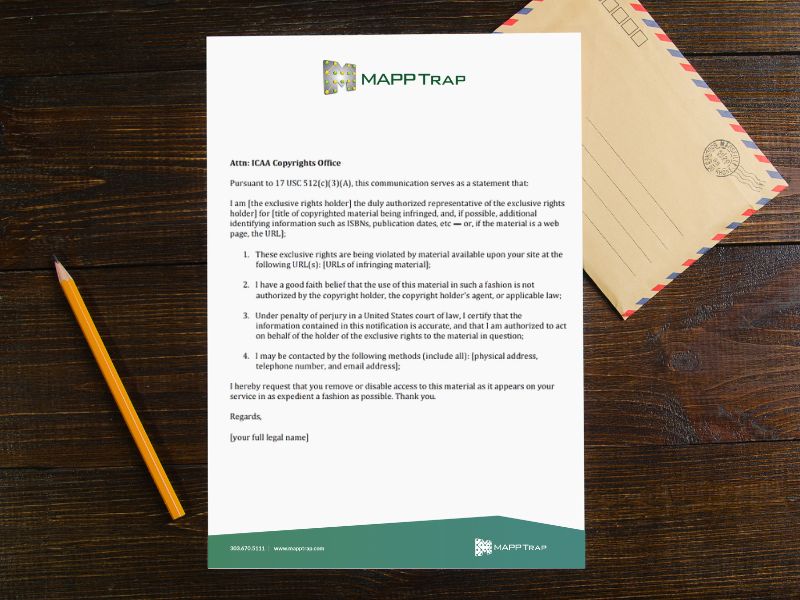If you find that an unauthorized seller is using your marketing materials — product images, descriptions, videos, etc. — one tactic you can use to pull down the offending content is to file a DMCA takedown notice for copyright infringement.
What is a DMCA takedown notice?
As the world moved online in the late 1990s, it became very clear that copyright infringement was rapidly becoming a problem. The ease of access to digital content, publishing platforms and marketplaces had made it very easy for bad actors to take the intellectual property of someone else and pass it off as their own.
In response, Congress passed the Digital Millennium Copyright Act (DMCA) in 1998. The DMCA creates a straightforward avenue for IP holders to get infringing content taken off of the internet.
.jpg)
If you find that your copyrighted material is being used without your permission on a website, you can file a DMCA takedown notice to have the infringing content removed.
How to file a DMCA takedown notice
The first step in filing a DMCA takedown notice is to identify the infringing content on the website. This can include text, images, videos, or other forms of media that you have created and own the copyright for. Once you have identified the infringing content, you will need to gather information about the website and the person or entity responsible for it. This can include the website's URL, the name of the company or individual operating the website, and their contact information.
Next, you will need to draft a takedown notice. This notice should include a description of the infringing content and the location of the content on the website, as well as a statement that the use of the content is not authorized by the copyright holder. You should also include a statement that you are the copyright holder or an authorized agent acting on their behalf.
It is important to note that the DMCA requires that the notice is signed electronically or physically under penalty of perjury.
Once the notice is complete, you will need to send it to the website's hosting company, who is responsible for removing the infringing content from the website. You can usually find the hosting company's contact information by doing a WHOIS search on the website's domain name.

What happens after I file a DMCA takedown notice?
In most cases, the hosting company will respond to the DMCA takedown notice by removing the infringing content from the website. However, if the website's operator believes that the use of the copyrighted material is protected by "fair use" or other exceptions to copyright law, they may choose to file a counter-notice.

If the website operator files a counter-notice, it is important to consult with a lawyer or legal expert to determine your next steps. In most cases, the hosting company will restore the infringing content to the website unless the copyright holder takes further legal action.
Important things to keep in mind
It is important to note that the DMCA process is only applicable for websites that are hosted in the U.S. If the website is hosted outside of the U.S., you may need to take legal action under the laws of the country where the website is hosted.
In addition, filing a DMCA takedown notice may not always be the best solution. In some cases, it may be more appropriate to reach out to the website operator directly and request that they remove the infringing content. This can be especially useful if the infringement is minor or the website operator is willing to cooperate.
Monitoring, identifying and eliminating unauthorized sellers can be a time-consuming and frustrating process, and DMCA takedown notices are one tool you can keep in your toolbelt to defend your brand online. MAPP Trap has successfully used this process to get our clients’ products taken down from rogue sites by providing the right tools and information on how to use them. We offer a comprehensive brand protection suite that offers unparalleled vision into who is selling your products online and who they are, and we provide proven processes for enforcement against violators.
For a comprehensive list of DMCA submission links (for marketplaces and domains) email compliance@mapptrap.com